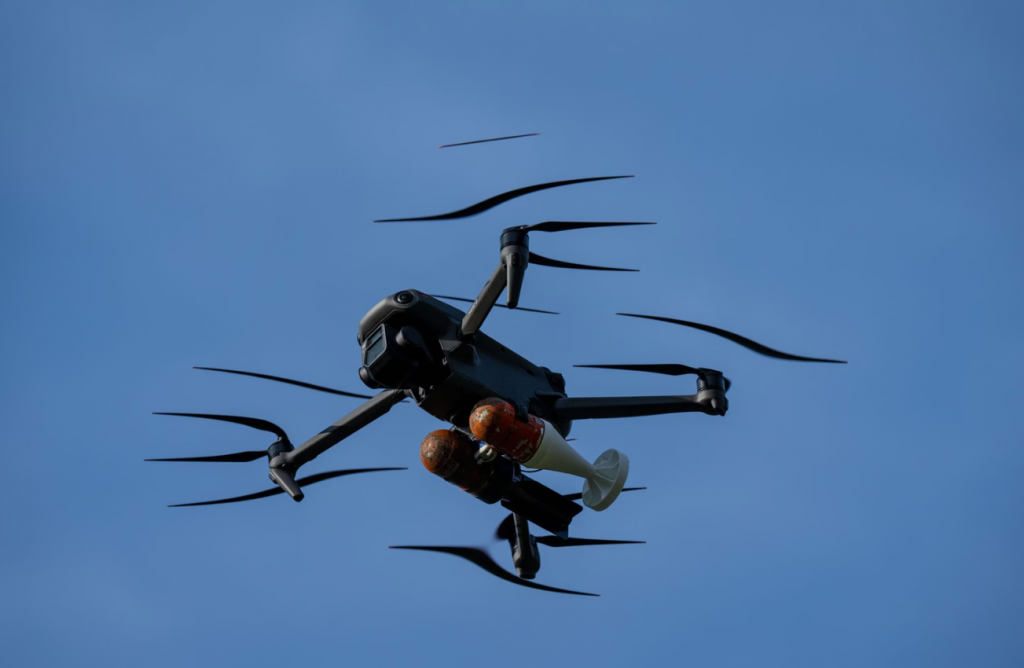Spider’s Web — Ukraine Deep Strike Into Russia
On 1 June 2025, Ukraine successfully struck — operation code named “Spider’s Web” — a sophisticated, simultaneous, massive blow against Russian strategic air capabilities using 117 individually controlled FPV (first person view) attack drones hitting 5 Russian air bases including ones in eastern Siberia — more than 2600 miles from Ukraine — and astride the Russia – China border.
Ukrainian reports indicate the strike was more than 18 months in planning and caught the Russians completely by surprise.
How did the Ukrainians do this, Big Red Car?
The Ukrainians are some clever bastards, dear reader. This was a cunning plan that relied upon stealth and harnessing the collective capabilities of fairly simple weapons within an intricate logistics network.
The Ukrainians loaded 117 FPV drones into wooden sheds or boxes and smuggled them into Russia. The smuggling operation took some considerable time.
Inside Russia, the boxes — with remote controlled tops that could slide open upon command — were mounted on trailer trucks and driven to the locations. In this manner, the Ukrainians overcame the issues of distance and electronic warfare against drones enroute to targets deep inside Russia.
The trucks — Russians trucks hired by Ukraine with Russian drivers — carrying the boxed drones were parked in very close proximity to the airbases — conjecture is they were literally parked across the street from the targets. Meanwhile, individual drone operators back in Ukraine commanded the tops of the boxes to open, the drones to fire up, and then guided them to their targets. Since they were FPV drones, the operators could pick targets on the fly.
It was a very clever plan, painstakingly executed using a simple approach well within Ukrainian capabilities. It caught the Russians by complete surprise and they were unable to mount any real time defense exposing a fatal vulnerability in their air defense.
Boom!
What were the targets, Big Red Car?
Apparently, there were five targets:
Belaya Air Base in eastern Siberia some 2600 miles from Ukraine;
Olenya Air Base near the Norwegian border in Russia Artic approximately 1100 miles from Ukraine;
Dyagilevo Air Base in western Russia and a major air base;
Ivanovo Air Base approximately 100 miles northeast of Moscow
Ukrainka Air Base approximately 2400 miles from Ukraine in eastern Russia adjacent to the Russia-China border
The key takeaway here is this was a deep strike, not a border skirmish.
How much damage was done, Big Red Car?
There is some broad disagreement as to how much damage was done, but it was considerable. The Russians have attempted to downplay the significance, but that is very difficult given the breadth, depth, and scope of the attacks.
1. Sources suggest that 44-48 Russian aircraft were destroyed or substantially damaged plus some critical infrastructure including fuel depots.
2. Satellite confirms 13 Russian aircraft destroyed or substantialy damaged.
3. The planes include:
Tu-95/Tu-95MS nuclear capable strategic bombers used to launch cruise missiles against Ukraine;
Tu-22M3 strategic bombers;
A-50 long range radar detection aircraft used to detect Ukrainian air defenses in critically short supply
An-12 military transport aircraft
The military transport aircraft is of no importance, but the rest of the planes are very important aircraft.
How do the numbers shake out, Big Red Car?
The investment return is quite interesting.
1. The FPV drones cost about $1,000 per unit.
2. The damage done to Russian aircraft is valued at about $7B and is approximately 30% of the Russian nuclear capable fleet. Huge loss.
Pretty damn grand ROI, no?
How did the Russians take it, Big Red Car?
Not well, amigo. The reaction is still settling in, but the Russians were caught flatfooted and they are surprised, perplexed, and pissed.
1. Putin called an “emergency” Security Council meeting to address the subject. That meeting seems to have been already held, but there is no read out as to what was discussed or decided.
2. In public statements, Putin said the attack was a terrorist action and made it impossible to conclude a peace treaty with Ukraine. This, like much of what Putin says, was for internal consumption. There is a clear hardening of the Russian position as they are embarassed.
3. There were peace talks held between Ukraine and Russia in Istanbul on 2 June. Speculation was Putin would attend, but he sent a fairly low level delegation.
4. The night after the Ukrainian attack, Russia unleashed what is being called the largest nighttime drone and cruise missile attack on Kyiv using 427 drones and 7 cruise missiles. This was a gigantic attack.
5. The Russian military blogosphere characterized the attack as a “Black Day” in Russian history and noted that the “special military operation” was a huge undertaking now and that Ukraine could strike in any corner of Russia. This is a substantial public sentiment issue.
So, what are the strategic implications, Big Red Car? What’s the big picture?
Spider’s Web clearly energizes the Ukrainian defense and Putin’s special military operation is turning into a turd around the old boy’s neck.
1. By deploying asymetrical warfare, Ukraine has struck a huge blow against Russia and has broadened the battlefield to all of Russia. It is important to note that recently the Europeans have authorized the Ukrainians to “go deep” with the weapons supplied by the Europeans.
2. This has gigantic implications for the peace talks and takes some air out of the smug Russian approach. Ukraine is sitting a little higher in its saddle now.
3. Ukraine is a clever, resourceful, and cunning foe and like the way they have driven off the Russian navy using naval drones, the Russians will have to think twice as to where they station their aircraft. What keeps the Ukrainians from doing the same thing in Moscow and taking out Putin?
4. Smuggling simple FPV drones deep into Russia and getting beneath the umbrella of Russian air defenses is pretty damn clever.
5. Donald J Trump is likely not getting the Nobel Peace Prize for Ukraine.
6. The Russians are getting closer and closer to using a tactical nuclear weapon.
But, hey, what the Hell do I really know anyway? I’m just a Big Red Car. Bravo, Ukraine. Well played.







